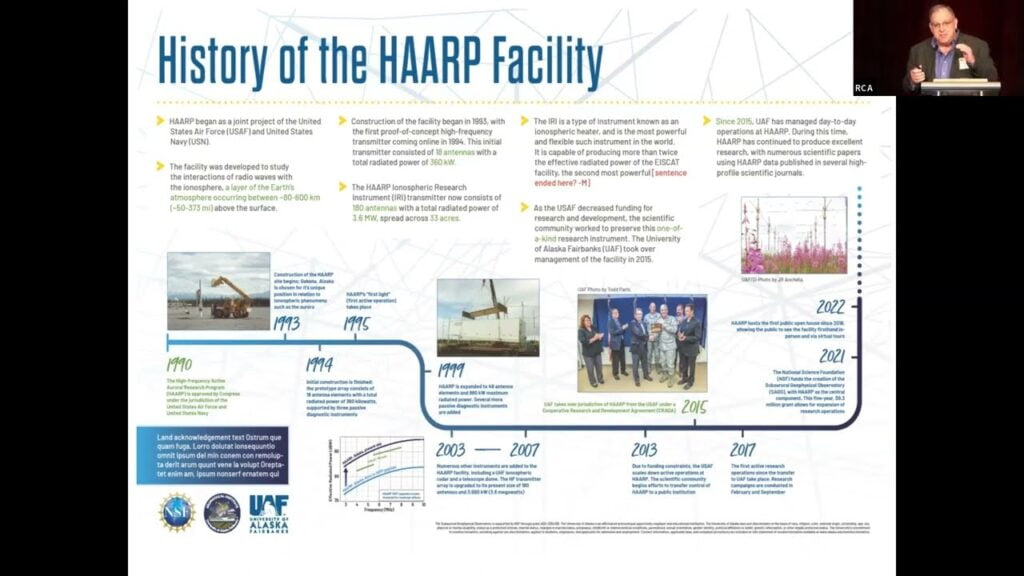Summary:
The HAARP Research Station is a state-of-the-art ionospheric research project located in Alaska and was jointly funded by the U.S. Air Force, U.S. Navy, and the Defense Advanced Research Projects Agency (DARPA).
Designed and built by a Washington, DC based APTI/BAE Systems team, its purpose is to analyze the Earth’s ionosphere and investigate the potential for developing ionospheric enhancement technology for radio communications and surveillance.
The HAARP facility was built in three stages starting in 1993, research operations began in 1996, and was completed in 2007. In 2015, the HAARP program and all assets were officially transferred to the University of Alaska Fairbanks (UAF), and it continues to operate today.
Presented by Steve Floyd, Chief RF Systems Design Engineer for HAARP working at APTI/BAE Systems.
As Chief Engineer for the HAARP, Steve was responsible for all hardware systems designs, equipment installation, and site operations until 2014 when he became a part time consultant to the program. His current responsibilities are primarily involved in the design of high power SDR based Radar systems, including EW and Communications systems, at Ultra Electronics.
44 min
Content Source/Owner: Radio Club of America
~
Timestamps:
1:42 – What is HAARP?
9:42 – Where are we?
15:11 – Other Ionospheric research sites
17:28 – HAARP Site
20:55 – HAARP towers
23:28 – Hybrid Transformer
24:41 – Transmitters
26:28 – Operations Center
27:49 – Real-time monitoring
29:01 – Power requirements (to operate the HAARP transmitters)
32:00 – Transmitters’ installation
34:19 – Shelter Building
35:24 – Auroral Oval
36:21 – Applications
36:59 – Artificial Aurora
37:40 – Other Experiments
38:06 – HAARP site close-up
39:11 – Questions


